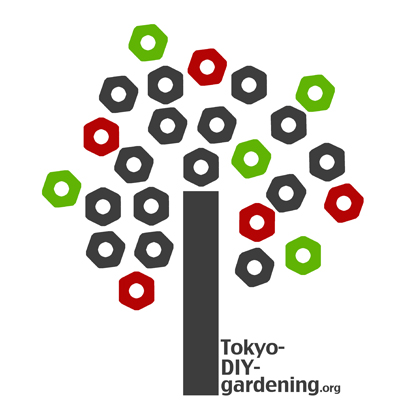User Voices Drive Train Station Fixes
This sign in Shibuya station illustrates how station employees have ‘fixed’ ticket gate signage at the request of users.
In this case, existing signage left passengers unclear as to whether the station could be exited from the ticket gate. This was fixed by installing two signs pointing to well known exits/meeting spots.
Materials: Laminated Paper
Location: Shibuya-ku, Tokyo
Park Bench in Plastic Twine
Park bench constructed from household seating and plastic twine.
See “Bus stop chairs are gifted, unmatched, and spontaneous” for an insightful take on the subject (on Tokyo Green Space).
Materials: Plastic Twine
Location: Akishima, Tokyo
Hand Made Shopping Street Map
Hand made map showing shops and attractions in the center of Nagoya’s shopping district, Sakae.
Various fonts, paper, and hand written annotations, along with fading, wear and tear evoke the temporality of commerce.
I wonder what rules and regulations hold for the those allowed to add to the sign. What are the penalties for unauthorised editing?
Materials: Paper, Marker, Laminator
Location: Nagoya, Sakae
Early October is Ginan Season
Early autumn foraging. Making the city your pantry.
It’s hard to miss the ginan (ginkgo nut) season – stinky parks and boulevards, grimy eldery citizens on their hands and knees across the city. Listening (for once) to my pleading wife I had always refrained from foraging and limited myself to picking up clean nuts from local vege shops and friendly neighbours. Today, emboldened by an off-the-cuff lesson by a local retired tantric meditator and astral spectrum rider (also an expert at losing his pension packet at the races) I picked up a few on the way home from a morning tea at Showa Kinen Koen.
It’s as simple as the yogi assured me. Pick them up, wash them off at home, fry them up while still in their shells, nibble with salt and shochu.
I’m pleased to belatedly add the ginan to my foraging schedule, alongside favourites Mulberry and Tokyo Poppy Seed.
(Originally posted on Tokyo-DIY-Gardening)
(This post is part of our ongoing Tokyo Local Fruit project)
Bicycle Support
End piece added to bicycle parking port after complaints from residents about wind blowing over bicycles.
Location: Setagaya, Tokyo.
This example is a note for a pamphlet on “Hand Made Aspects of Mass Produced Housing”. Subscribe to my somewhat-frequent letter HERE if you want to keep in touch easily.
Annotated Trolley
Trolley underbelly provides space for instructions on its own use – in this case, for use only within the rubbish center area.
Materials: Marker
Location: Setagaya, Tokyo.
This example is a note for a pamphlet on “Hand Made Aspects of Mass Produced Housing”. Subscribe to my somewhat-frequent letter HERE if you want to keep in touch easily.
Storage and Fire Saftey
Fire extinguisher stored right in the most flammable area. Salvaged bath/shower stool put to use as stand.
Materials: Bath Stool
Location: Setagaya, Tokyo.
This example is a note for a pamphlet on “Hand Made Aspects of Mass Produced Housing”. Subscribe to my somewhat-frequent letter HERE if you want to keep in touch easily.
Cardboard Box Recycling Tower
Cardboard box recycling tower constructed from salvaged metal rack and wood block for stabilization. Stool for reaching upper levels.
Materials: Metal Rack, Wood Block
Location: Setagaya, Tokyo.
This example is a note for a pamphlet on “Hand Made Aspects of Mass Produced Housing”. Subscribe to my somewhat-frequent letter HERE if you want to keep in touch easily.
Disposing of Cardboard & Paper
Series of instructions regarding the disposal of paper and cardboard. Green laminated sign reads ‘paper’, hand written sign instructs residents to secure bundles of cardboard with string, typed sign notes instructions from the city.
Materials: Laminated Paper
Location: Setagaya, Tokyo.
This example is a note for a pamphlet on “Hand Made Aspects of Mass Produced Housing”. Subscribe to my somewhat-frequent letter HERE if you want to keep in touch easily.
Disposal Instructions for Glass
Instructions on the disposal of glass bottles/jars – take the lid of first. Note emphasis over ‘lid’, cute portrait, and signature from the ‘Clean Trio’ who take care of the rubbish/recyling center.
Materials: Paper
Location: Setagaya, Tokyo.
This example is a note for a pamphlet on “Hand Made Aspects of Mass Produced Housing”. Subscribe to my somewhat-frequent letter HERE if you want to keep in touch easily.
Recycling Station
Overview of can, glass bottle and plastic bottle recycling station. Full crates form structure and support for empty.
Cheerful handmade sign providing instruction on the correct way to recycle plastic bottles.
Materials: Plastic Crates, Coat Hanger
Location: Setagaya, Tokyo.
This example is a note for a pamphlet on “Hand Made Aspects of Mass Produced Housing”. Subscribe to my somewhat-frequent letter HERE if you want to keep in touch easily.
Hose Storage
Functional adaption of park tree for maintenance equipment storage in a run-down apartment complex just off the high-fashion avenue of Omotesando.
Materials: Tree
Location: Off Omotesando, Shibuya, Tokyo
(Originally posted on Tokyo-DIY-Gardening.org)
Mosquito Repellent Vase in Park Toilet
Another example of the hand made aspects of Japanese mass-made toilets. This time a large can that used to hold mosquito coils has been placed in a Nagoya public toilet by Mr./Ms. Migita?/Uda?.
Great to see the date of placement clearly written on the side of the can.
Materials: Can
Location: Sakae, Nagoya
























































